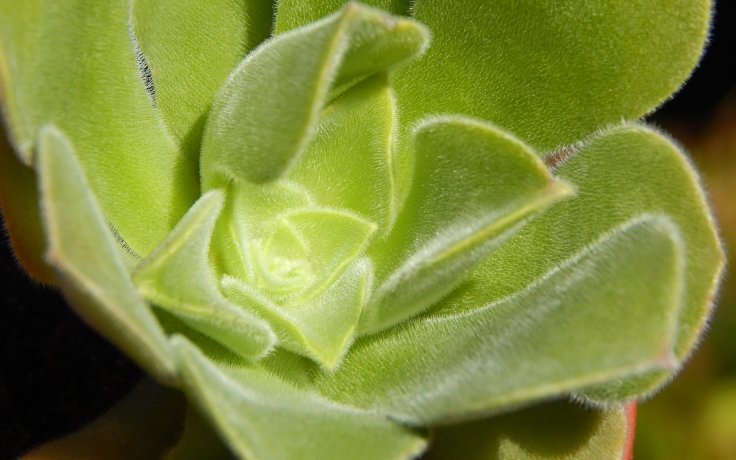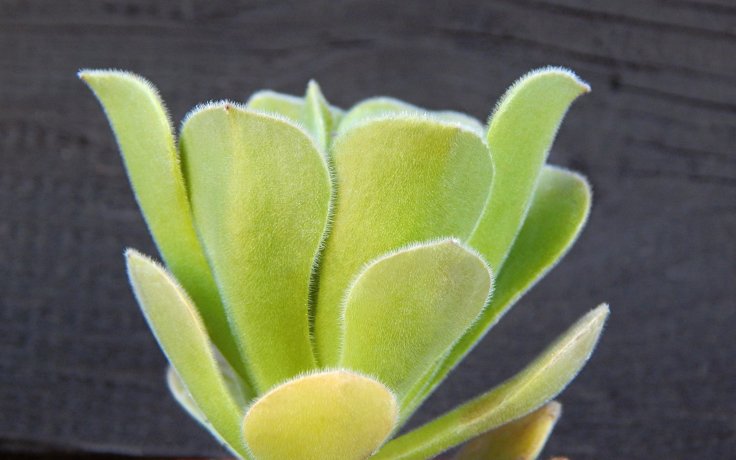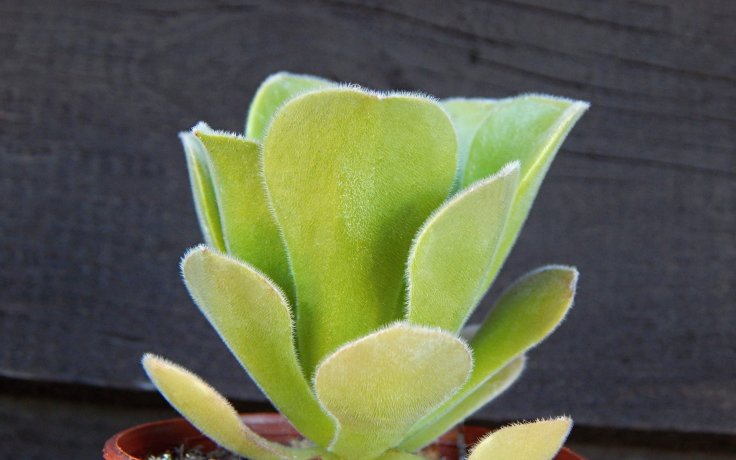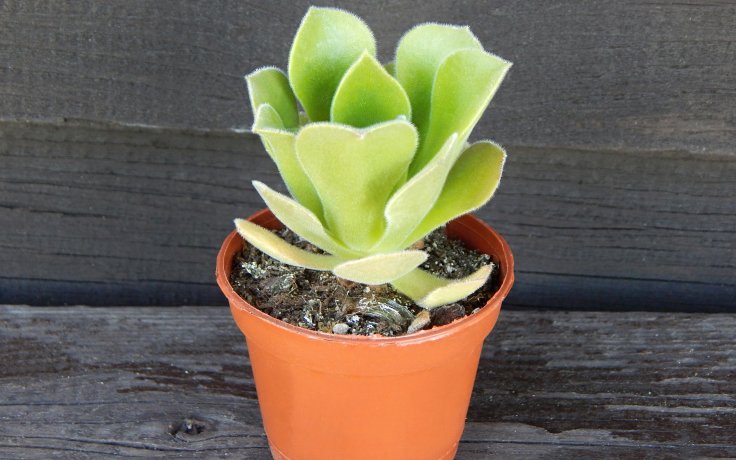- Home
- Succulents
- Aeonium
- Aeonium canariense





Aeonium canariense
The plant likes a sunny habitat, can tolerate partial shade.
Always water a few days after the substrate has dried out. Watering should be reduced in winter.
It can tolerate -6.7 °C in the short term. However, the plant is not hardy.
The plant can be fertilised and should be placed in a larger pot for faster growth.
Aeonium canariense is also known by the folk names Giant Velvet Rose, Tree Aeonium or Sempervivum canariense. It is native to the Canary Islands and is endemic to the island of Tenerife, where it is found on rocks and cliffs, rocky slopes and forests in the Anaga area up to the Teno mountains, at altitudes between 0 and 1300 m above sea level.
It is dominated by a dense and bowl-shaped ground rosette of bright green leaves, which may turn reddish or yellowish. The leaves are glandularly hairy, finely furrowed at the margin and rounded or pointed at the apex. The rosettes can reach a considerable width and become a truly unmissable ornament.
The rosette grows into a massive flower stalk at maturity, which bears a profuse inflorescence. The flowers are usually star-shaped, yellow in colour and add to the beauty of the plant. However, it is important to note that this succulent is a monocarpic plant, meaning that the rosette dies back after flowering. Flowering is a rather rare event that usually takes place when the plant is mature, and after flowering the mother rosette dies and continues to grow from the offsets.
During the growing season it is advisable to fertilise the plant with cactus and succulent fertiliser. If possible, it is advisable to transplant the plant into a larger pot to give it more room to grow. Aeonium canariense is an ideal choice for growers looking for a solitary plant with an impressive rosette. This endemic from Tenerife is guaranteed not to disappoint.